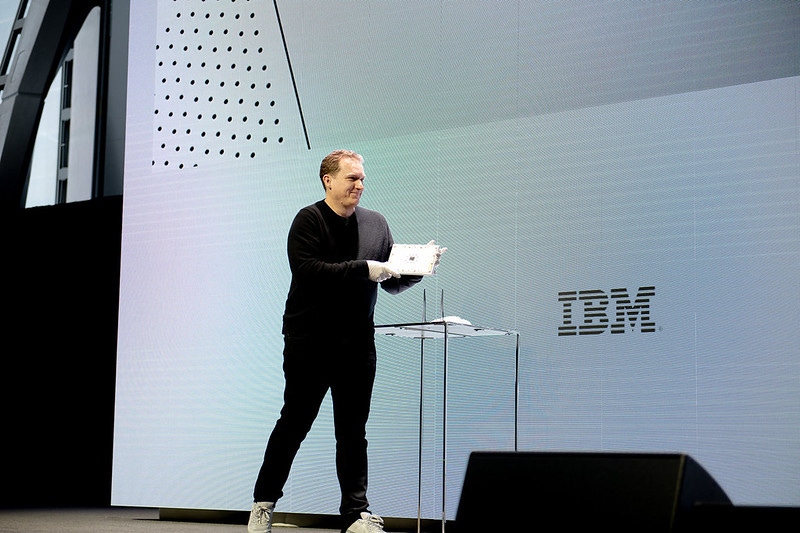IBM Unveils Quantum System Two, Heron Processor
Company sets out route to utility-scale quantum computing via error reduction, generative AI, quantum-centric supercomputing

IBM debuted quantum technologies that support its road map toward quantum utility – when quantum computers can reliably outperform classical computers in solving problems – at the company’s Quantum Summit in New York on Monday.
The event saw the launch of IBM’s 133-qubit utility-scale Heron processor, designed to deliver better performance with a much lower error rate than its predecessors.
The company also showcased IBM Quantum System Two, its first modular quantum computer designed to be integrated into supercomputing data centers. An IBM Quantum System Two, powered by three IBM Heron processors, has begun operations and supporting control electronics at IBM’s Yorktown Heights, NY, facility.
The company said at the event that these hardware breakthroughs enabled it to add a new goal to its “IBM Quantum Development Roadmap to 2033” to advance the quality of gate operations. Better-quality gates mean larger quantum circuits can be run, enabling quantum computers to tackle bigger problems.
“We are firmly within the era in which quantum computers are being used as a tool to explore new frontiers of science,” said IBM senior vice president and director of research Dario Gil.
“As we continue to advance how quantum systems can scale and deliver value through modular architectures, we will further increase the quality of a utility-scale quantum technology stack – and put it into the hands of our users and partners who will push the boundaries of more complex problems.”
Software Develop Kit, Generative AI for Quantum Programming
IBM also announced software innovations that aim to make coding for quantum computers easier, more powerful and more accessible. It has released Qiskit 1.0, its open-source software development kit, including Qiskit Pattern, a collection of tools that map classical problems and optimize them to quantum circuits.
The company also announced that it is integrating generative AI via its watsonx enterprise AI platform to help automate the development of quantum code for Qiskit.
“Generative AI and quantum computing are both reaching an inflection point, presenting us with the opportunity to use the trusted foundation model framework of watsonx to simplify how quantum algorithms can be built for utility-scale exploration,” said IBM vice president and fellow Jay Gambetta.
“This is a significant step towards broadening how quantum computing can be accessed and put in the hands of users as an instrument for scientific exploration.”
This article first appeared on IoT World Today's sister site, Enter Quantum.
Read more about:
AsiaAbout the Author(s)
You May Also Like
.png?width=100&auto=webp&quality=80&disable=upscale)
.png?width=400&auto=webp&quality=80&disable=upscale)




.png?width=300&auto=webp&quality=80&disable=upscale)
.png?width=300&auto=webp&quality=80&disable=upscale)
.png?width=300&auto=webp&quality=80&disable=upscale)